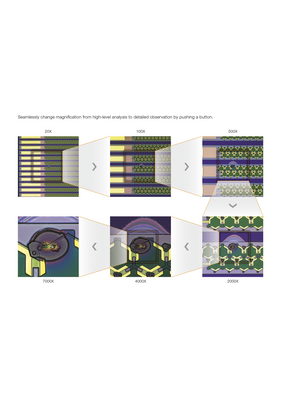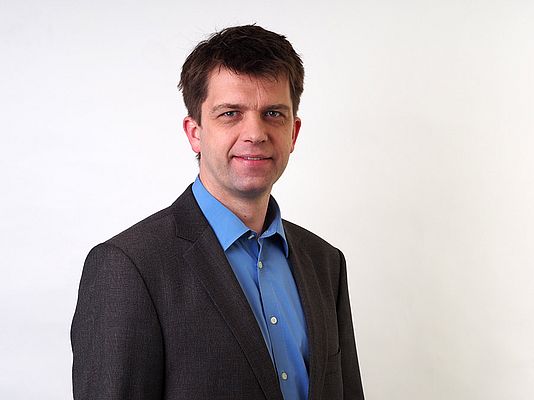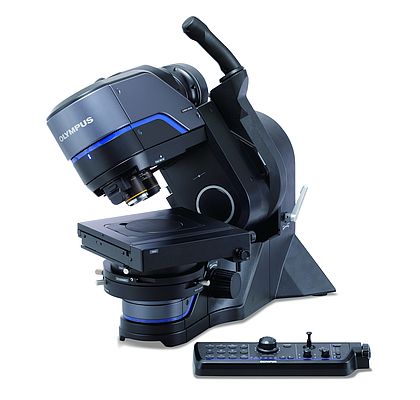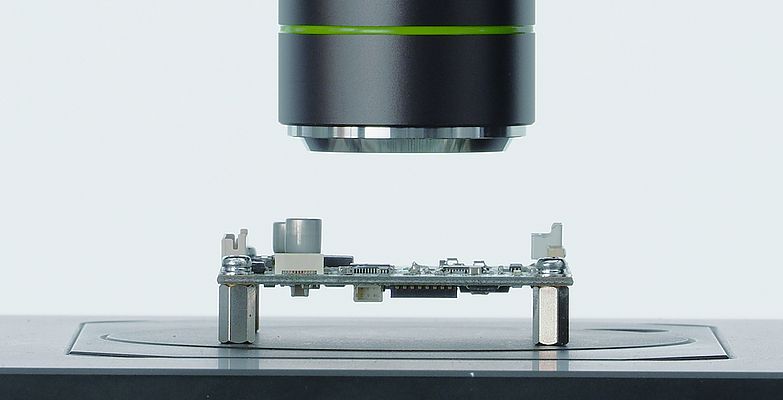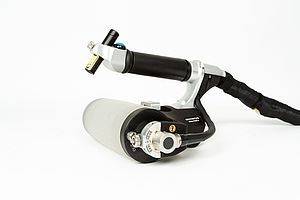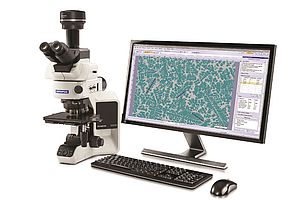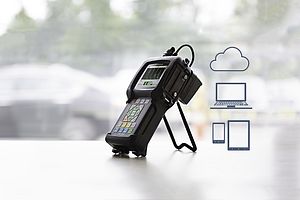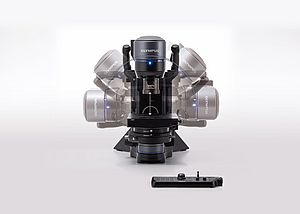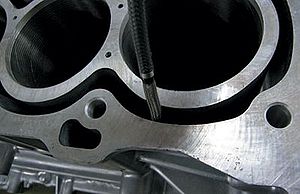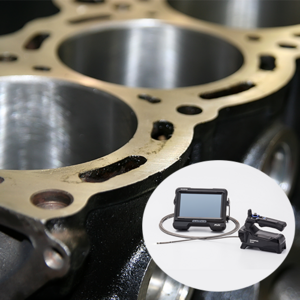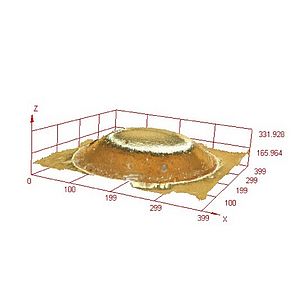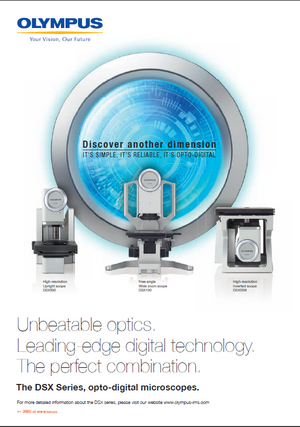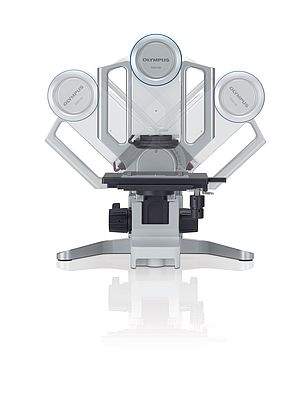This year, Olympus celebrates its 100-year anniversary. With their motto "making people’s lives healthier, safer and more fulfilling" Olympus provides inspection solutions across industrial markets such as the recently launched DSX1000 digital microscope, set to revolutionize the inspection of 3D features. We recently spoke to Markus Fabich, Strategic Marketing Manager at Olympus Europa, looking at company’s history and future plans for vision technology.
IEN Europe: Which moments have significantly marked the history of your company from your perspective?
M. Fabich: For me personally, an important moment was 14 years ago when we introduced the first LEXT confocal microscope to the European market. It was exciting for me to see that level of performance of a new technology – and how well it was received. It was a kind of trigger point for a lot of customer-driven innovations, which brings us to a very important point: the partnerships and the assistance to our customers which are the key to our innovations. This is a journey, a continuous process of partnering and assisting that makes me very proud. And you can clearly see the benefits of this in new products we’ve recently launched. We know this is certainly true for the LEXT OLS5000 confocal microscope and the DSX1000 digital microscope from the positive feedback we receive from our customers on a daily basis.
IEN Europe: With 100 years of experience in observation technology, what do you think will be next generation of inspection tools?
M. Fabich: Our heritage has always been more of a continuity than a sudden change. For example, we sometimes talk about the digital age coming, but actually we entered the digital age 20 years ago, when we introduced digital cameras. In the years that followed, we improved our microscopes by adding motorization and automation to make it really easy, even for users with no microscopy expertise, to use complex systems such as confocal microscopes and get the most out of them. Another example is quantitative image analysis where our software helps users to evaluate images in accordance with industry standards and get precise, reliable values out of digital microscopy images. These are all customer needs that grow, evolve or change over time – and our products evolve based on those needs.
This is actually one of our key strengths: turning our optical expertise into solutions that help customers in their industry. Our customers are all experts, they need to be experts in fields like additive manufacturing or injection molding. Since these fields of expertise are getting more complex, our products have to comply with more standards. Assisting our customers with our optical expertise, our core competence, and making sure that our technology is accessible is our duty.
IEN Europe: What are the latest additions to your product range and how can they improve existing methods?
M. Fabich: We have recently introduced the DSX1000 and we are very busy working together with our customers to anticipate and solve future challenges. There are so many new functionalities included in our DSX1000 that make us proud, such as the integrated main unit, the fully motorized zoom unit and full motorization of all the illumination techniques. We incorporated a range of powerful illumination techniques, such as polarization, interference contrast and MIX illumination. In the past, one would have to be an expert on microscopy to use these, but now these powerful features are available to everybody.
IEN Europe: Could you give an example of a successful application case?
M. Fabich: Across industry, people’s lives are full of moments when they need visual assistance. If you go to any factory in the world, you can be sure that there is a microscope somewhere. For example, if you work on finished surfaces with high polishing quality, you need to be sure that you have created a high-quality, smooth surface. To check this, you can do roughness testing with nanometer precision using a LEXT confocal microscope or you can benefit from the visual inspection capabilities on the DSX1000, where the live image with differential interference contrast (DIC) gives immediate qualitative and quantitative information to make sure your machining processes are correct.
IEN Europe: Can you give us an example of successful integration of Olympus' optical tools into other applications?
M. Fabich: For this, I would like to refer to our core competence: the objective lenses of microscope. One objective consists of up to 30 different optical elements produced with nanometer precision. This allows us to adjust the lenses to many different fields of use. For Raman spectroscopy, for example, we can create infrared objectives that are artefact-free, enabling them to transmit signals with very high reliability. The same objectives are also used to look through silicon-based materials to inspect MEMS devices. On the other end of the spectrum, we use UV and deep UV light to reach a high optical resolution. The same lens manufacturing expertise is relevant for so many different applications – from hospitals to semiconductor manufacturers, from failure analysis to roughness inspection.
IEN Europe: Are you considering using AI technology in your products?
M. Fabich: We have already included AI algorithms in, for example, our life science microscopy platforms. In industry, we very often face the well-known challenge of working with standards and norms that are already in place. It is much more important for our customers’ day-to-day work to make sure that they can comply with these standards quickly. So, for us it’s all about making sure that every company can comply easily with all existing and new standards in their industry. But I’m sure that someday we’ll get to a point where AI becomes compatible with compliance, industry standards and safety.
IEN Europe: Which are the biggest challenges Olympus is currently facing?
M. Fabich: At Olympus we always look at the challenges of our partners and customers. We do business with industry experts, so the challenges our customers face become our challenges. For example, in the automotive industry we’re seeing a transition from combustion engines to electric cars. This means that our customers must relearn their own supply chain and their own compliance. It’s our job to make sure we have the inspection solutions to support them.
IEN Europe: Is there anything more you would like to add?
M. Fabich: We will be at the productronica trade fair in Munich this month with our full line-up of industrial equipment. At this event there will be an innovation forum where four of our industry experts will speak on a range of hot topics affecting industry today, so I would like to invite everybody to come and meet us there.
Anis Zenadji


